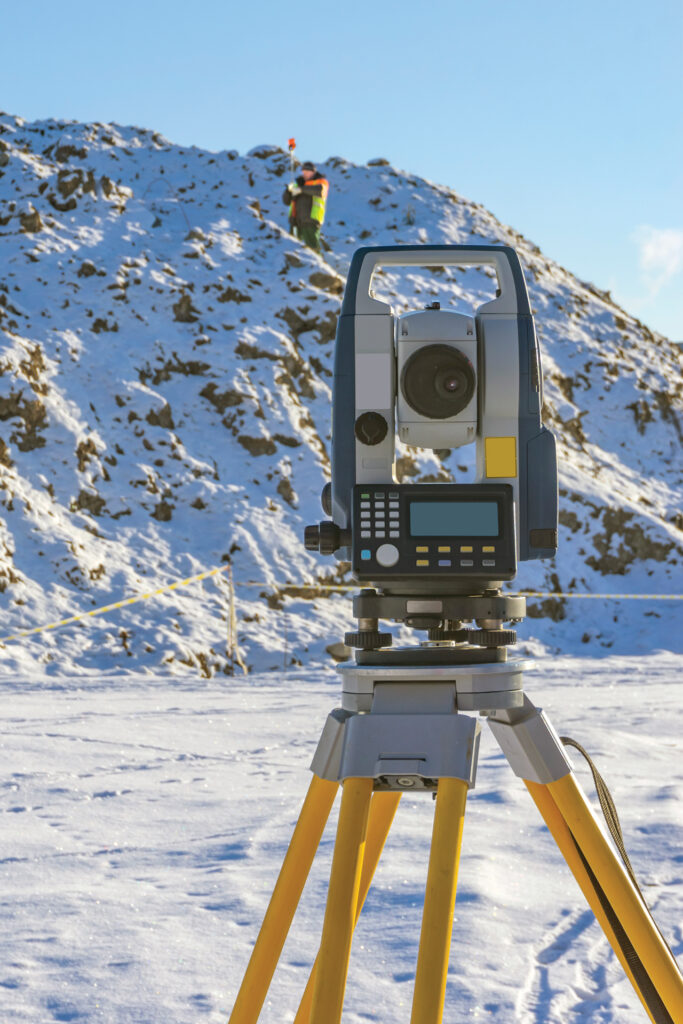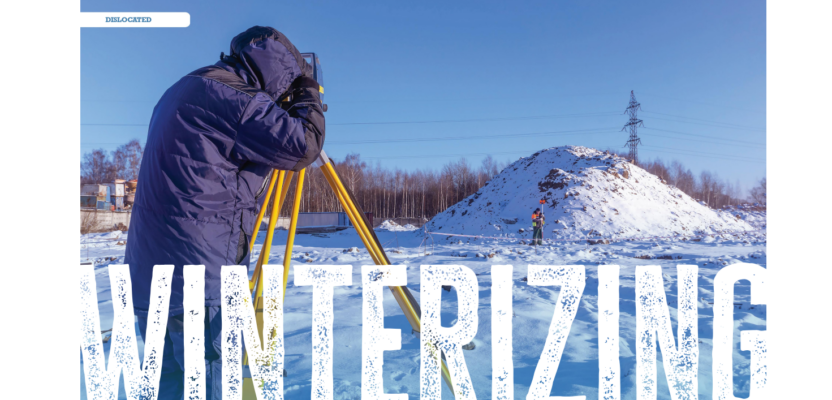For some, surveying goes on through the snow and ice of the season
It’s the time of year when the northern part of the U.S. is getting tired of the snow accumulations, this year especially if you’re in the Great Lakes area. Most of the areas north of the Mason Dixon Line have been trudging through snow for much of this La Niña winter.
For surveyors, snow and cold can be a real impairment to field work. To some, who choose to bundle up and work through some snow squalls, it may not be as detrimental as rain for completing the field work, but it can still cause a lot of problems.
In my early years of working on the survey crew in Pennsylvania and the mountains of western Maryland, it seemed that most projects were shut down through the Christmas holidays and the month of January. In many cases, construction projects shut down all excavating and trenching as soon as the frost penetrated the first few inches of soil. When this happened and the snow was deep, many of the field crew members were laid off for a few weeks.
That seemed to have changed in later years, but there were many winters early on when I collected unemployment benefits. Even as late as 1991 I was put on furlough due to continued snow cover. It was quite a challenge for me and my family, as we had moved into our new house the previous October. I started to question my career choice because I wasn’t sure how I would pay my mortgage. With some help from family and my friends at church, we made it, even though I had to find a new employer that was an hour drive from my house.
When the weather is frigid and the wind is blowing, working in the field can be difficult, but when the snow piles up to a depth of one foot or more, there’s not much surveying that can be done in the field. When a boundary survey needs to be completed, it’s best to wait for the snow to melt before going in the field. Some corners can be found by digging through the snow, but there is other boundary evidence, such as edges of roadways, that will be covered.
Topographic surveys are almost impossible to perform when snow covers the ground. A survey technician may be able to get spot elevation shots in the grass by poking the rod through the snow, but how does one know if the point of resistance is the ground, or a frozen crust under the powdery snow on the top. Likewise, it may be easy to get shots on a plowed parking lot or roadway, but finding the edges of the pavement may be a laborious task that makes the work impractical.
 When I worked for an engineering firm that did a lot of work for the Pennsylvania Department of Transportation, I was sent to Johnstown, Pennsylvania, in January to do a topographic survey for the replacement of the John Street Bridge. We did not have GPS at that time–in fact it was mostly used for large control survey–but instead, we were to start our survey from control points established by the PennDOT crews.
When I worked for an engineering firm that did a lot of work for the Pennsylvania Department of Transportation, I was sent to Johnstown, Pennsylvania, in January to do a topographic survey for the replacement of the John Street Bridge. We did not have GPS at that time–in fact it was mostly used for large control survey–but instead, we were to start our survey from control points established by the PennDOT crews.
The first point we endeavored to find was in the sidewalk at an intersection. The snowplows had pushed the roadway clear and had piled snow about four feet deep at the location of the control point. I decided to look for some other points first. We searched and found a few other points but then determined that we needed that first point to either occupy or use as a backsight. We spent the next few hours chipping and digging that frozen snowbank to recover that point.
I worked with an older surveyor at one time who was one of those “never-say-die” kind of guys. When the snow piled up to a depth of more than two feet one winter, he decided the boundary survey that needed to be done in the mountains couldn’t wait, so he strapped on his snowshoes and trekked out through the woods in search of boundary monuments.
I think it is fair to say that the snow can be challenging for surveyors, and it seems to go without saying that the work will be slowed to an inefficient rate. I guess that’s why we seem to have most of the surveyors’ conferences this time of year.
I wonder how many surveyors can soldier on and continue their work throughout the winter weather.

